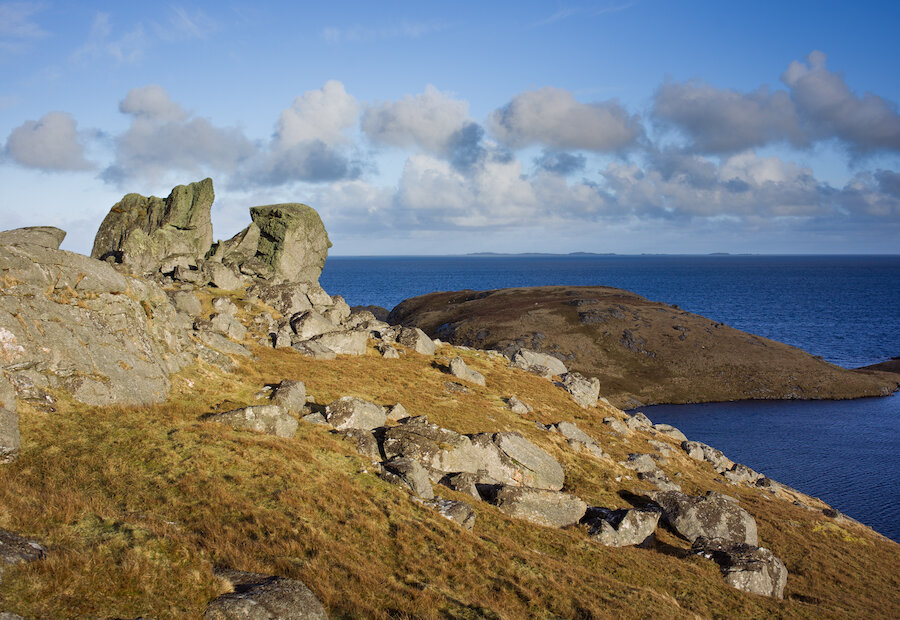This route offers either a short, or an option of a longer walk past one of Shetland's most dramatic inland glacial features. Start by following the track that heads east through an ice moulded landscape past the Loch of Grutwick to Grut Wick. This is where the Ninian pipeline bringing oil from the North Sea makes its landfall. Note the spectacular 'eye shaped' crystals in the rocks of the quarry near the end of the track. From quarry head northeast to the South Loch of Stofast guarded by its amazing 'Steens'.
From a little to the south of the Steens of Stofast, you get the best known view of these fractured blocks, with one rock profile resembling a sphinx gazing out to sea. The Steens of Stofast have been carried by glacier action and dumped here, not far from where they originated. From here you can return to where you began by heading southwest across the hill, or if time and energy permit, you could take a longer walk to circle the whole peninsula.
The ground slopes and becomes rocky as you set off to the north towards Fugla Water, with its small islets, or holms. Stay to the seaward side of the slope. An old cru, or sheep shelter, stands near the sea, but you have to cross a stream and a stone wall to reach the northern shore. There are two planticrubs (plant shelters) and several prehistoric sites in the area, ideally situated near a loch, sheltered from the north and close to the sea.
Continue to the top of the Ward of Outrabister, with its trig point and fine views in good weather. Head north, keeping the Loch of Winneries to the east and the Loch of the Ward to the west; here there are scattered boulders and sections of inland cliff, with small valleys and crags. In late summer, this whole area blazes with heather in bloom and many of the craggy outcrops shelter wild rose and honeysuckle.
It is worth climbing to the Hill of State, to get your bearings, with the south coast of Yell and Burravoe ahead, Whalsay to your right and the islands of Orfasay, Samphrey, Fish Holm and Linga to the left with Mossbank and Firth behind them. From here, the northernmost section is easier. Approach the north shore quietly, as there are often otters playing here where the island of Lunna Holm and some rocky skerries make for perfect otter territory.
Head west and then south from here, following the shore. The going is more even now and you can stop for a rest at the attractive little inlet of Feor Wick, where a burn runs down from the small Loch of Feorwick above, to the sea. Continue south past Outrabister, past the steading, with its antiques business and follow the road back to the start point.
As you leave Lunna, you could visit Lunna Kirk, one of Shetland's oldest and most beautiful tiny churches, just below Lunna House, famous for its historic connection with the Second World War "Shetland Bus".
